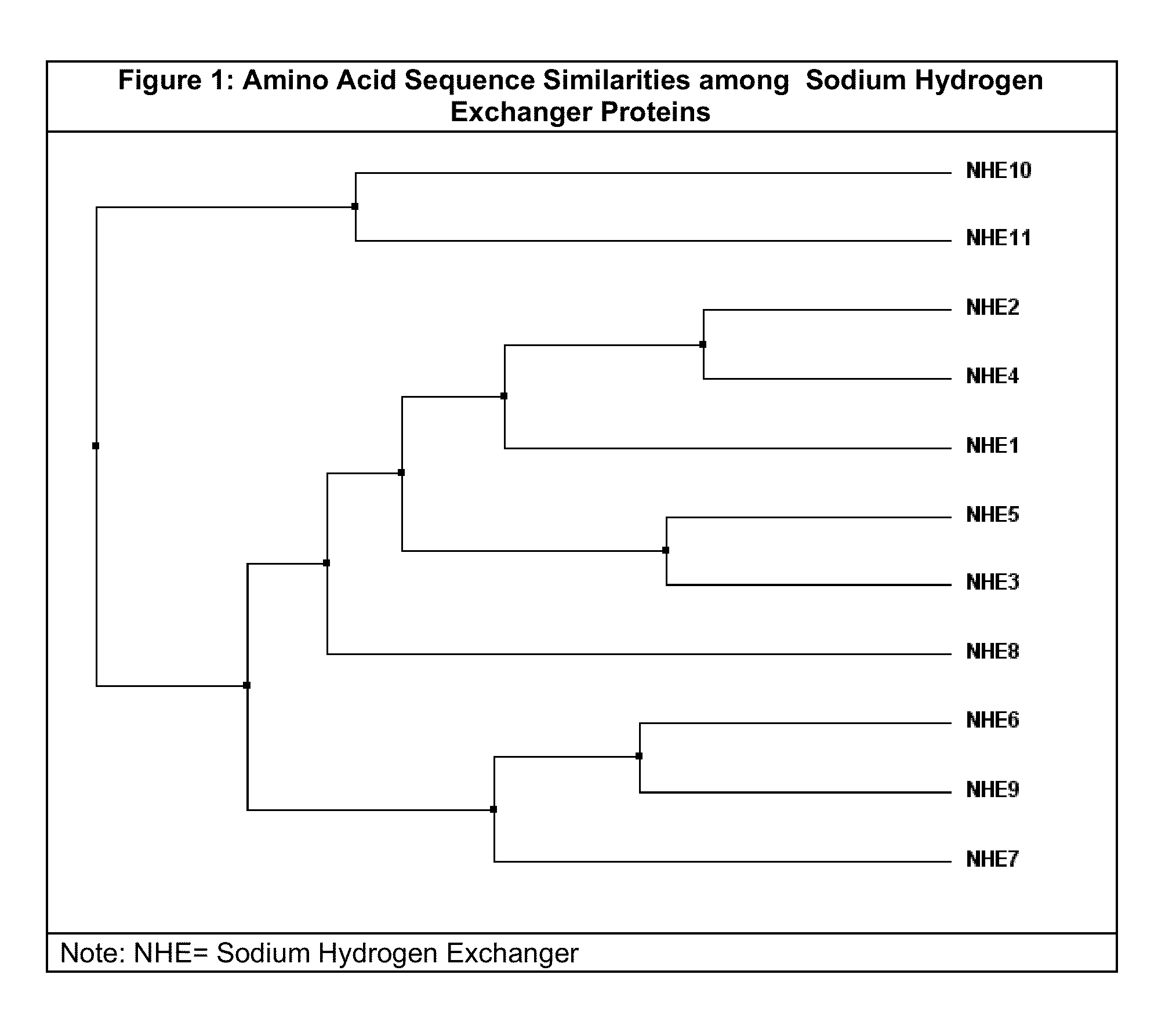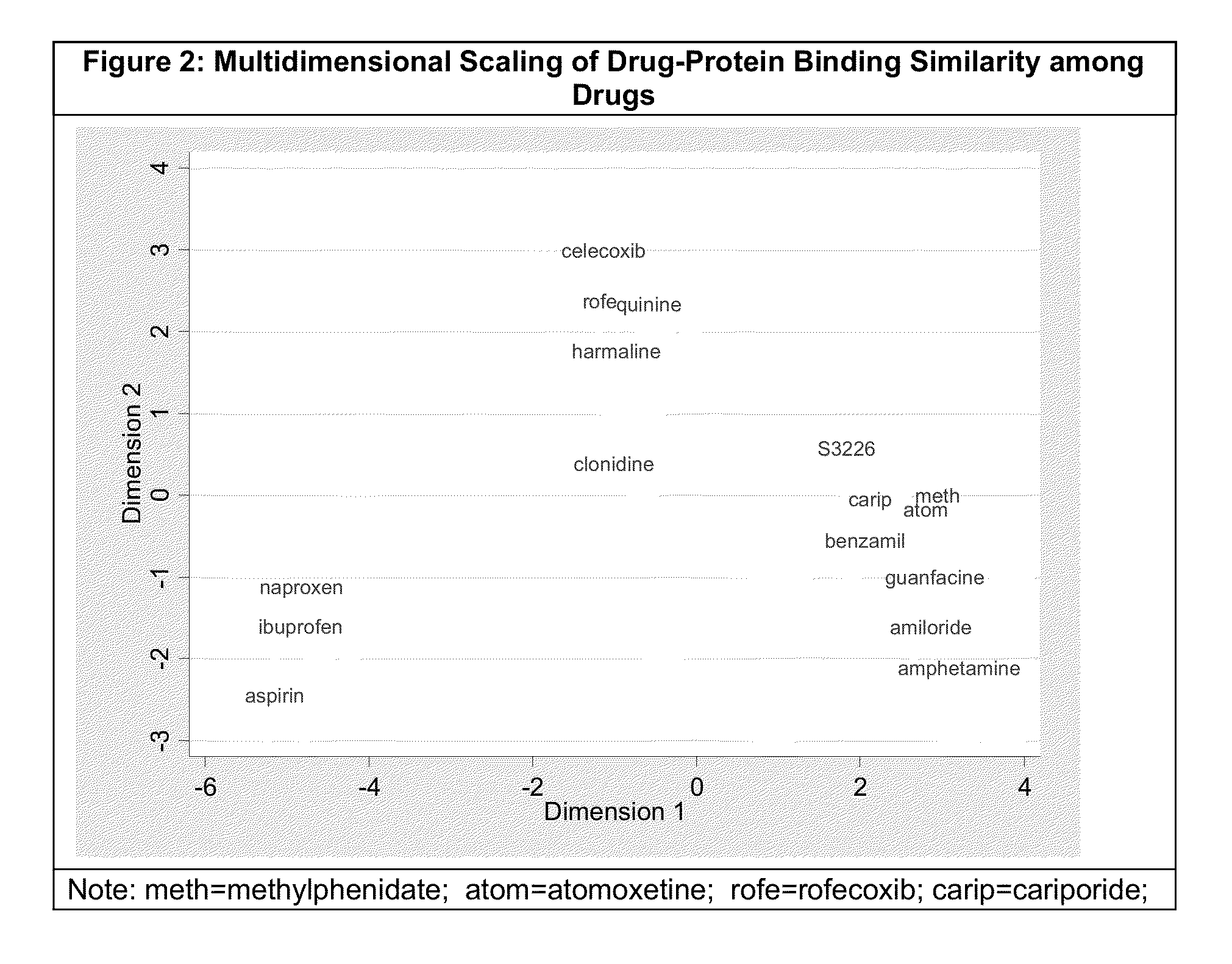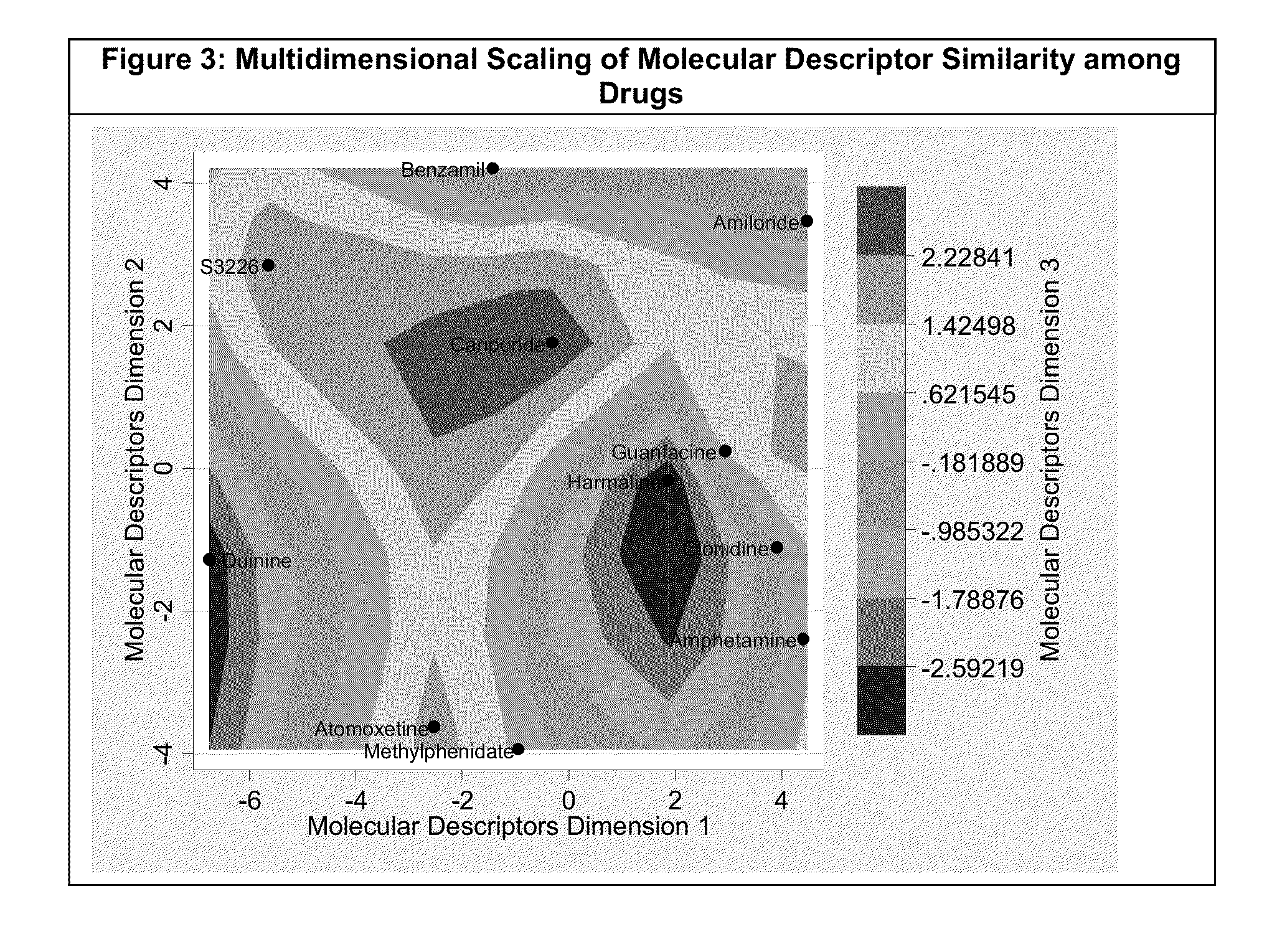Treating attention deficit hyperactivity disorder with NHE inhibitors
a hyperactivity disorder and sodium hydroxide technology, applied in biocide, instruments, library screening, etc., can solve the problems of not “curing” the disorder, current treatments do not markedly etc., to improve the deficits of executive functioning or emotional self-regulation, improve the lives of many, and insufficient symptom reduction
- Summary
- Abstract
- Description
- Claims
- Application Information
AI Technical Summary
Benefits of technology
Problems solved by technology
Method used
Image
Examples
example 1
[0041]Evidence for new etiologic pathways is combined with bioinformatics data to assess the possibility that existing drugs might be repositioning for treating ADHD. This approach was used to determine if prior human and animal data implicating the sodium / hydrogen exchanger 9 gene (SLC9A9) in ADHD correctly implicate NHE inhibitors as potential treatments for ADHD. The potential for repositioning by assessing the similarity of drug-protein binding profiles between NHE inhibitors and drugs known to treat ADHD was determined using the Drug Repositioning and Adverse Reaction via Chemical-Protein Interactome (DRAR-CPI) server. The results of this evaluation show that NHE9 has a high degree of amino acid similarity with NHE inhibitor sensitive NHEs in the region of the NHE inhibitor recognition site that has been defined for NHE1. High correlations in drug-protein binding profiles were found among most ADHD drugs. The drug-protein binding profiles of some NHE inhibitors were highly corr...
example 2
[0056]To compare the amino acid sequences of NHE9 with other NHEs, human NHE sequences were multiply aligned using ClustalW and the BLOSUM62 alignment score matrix. A cluster plot of NHE amino acid sequence similarity was created in Jalview 2.6.2. Although Nakamura et al., “Four Na+ / H+ Exchanger Isoforms are Distributed to Golgi and Post-Golgi Compartments and are Involved in Organelle pH Regulation,”J Biol Chem 280:1561-1572 (2005), which is hereby incorporated by reference in its entirety, had previously presented the amino acid similarities of NHE proteins, applicant's focus was on the NHE inhibitor recognition region which was shown experimentally to involve residues within the fourth and ninth membrane spanning helices (these are bounded by amino acids 150 and 400) (Khadilkar et al., “Identification of Sites in the Second Exomembrane Loop and Ninth Transmembrane Helix of the Mammalian Na+ / H+ Exchanger Important for Drug Recognition and Cation Translocation,”J Biol Chem 276:4379...
example 3
[0062]As FIG. 1 shows, in the predicted transmembrane region, NHE9 is most similar to NHE6 and NHE7. There is one large cluster comprising NHE1-5 and NHE8 and a third cluster with NHE10 and NHE11. The percent of identical or similar positions between NHE9 and NHEs shown experimentally to be sensitive to NHE inhibitors are NHE1: 68%, NHE2: 72.4%; NHE3: 65.6%; NHE4: 72.8% and NHE5: 64.4%.
[0063]Table 1 shows the results of the analyses correlating protein binding affinity z-scores between drugs.
TABLE 1Significant Drug-Protein Binding Correlationsbetween ADHD Drugs and Other DrugsMPHAMPHATXGUANCLONAttention Deficit Hyperactivity Disorder Drugsmethylphenidate1.000.730.780.74.dextroamphetamine0.731.000.750.84.atomoxetine0.780.751.000.81.guanfacine0.740.840.811.00.clonidine.....Sodium / Hydrogen Exchange Inhibitorscariporide0.650.650.700.71.amiloride0.700.860.790.880.21S32260.610.600.720.72.benzamil0.680.710.750.720.23quinine.−0.31.−0.21.harmaline.−0.21..0.55Nonsteroidal Anti-inflammatory Dr...
PUM
| Property | Measurement | Unit |
|---|---|---|
| attention deficit hyperactivity disorder | aaaaa | aaaaa |
| deficit hyperactivity disorder | aaaaa | aaaaa |
| Attention-deficit Hyperactivity Disorder | aaaaa | aaaaa |
Abstract
Description
Claims
Application Information
 Login to View More
Login to View More - R&D
- Intellectual Property
- Life Sciences
- Materials
- Tech Scout
- Unparalleled Data Quality
- Higher Quality Content
- 60% Fewer Hallucinations
Browse by: Latest US Patents, China's latest patents, Technical Efficacy Thesaurus, Application Domain, Technology Topic, Popular Technical Reports.
© 2025 PatSnap. All rights reserved.Legal|Privacy policy|Modern Slavery Act Transparency Statement|Sitemap|About US| Contact US: help@patsnap.com



